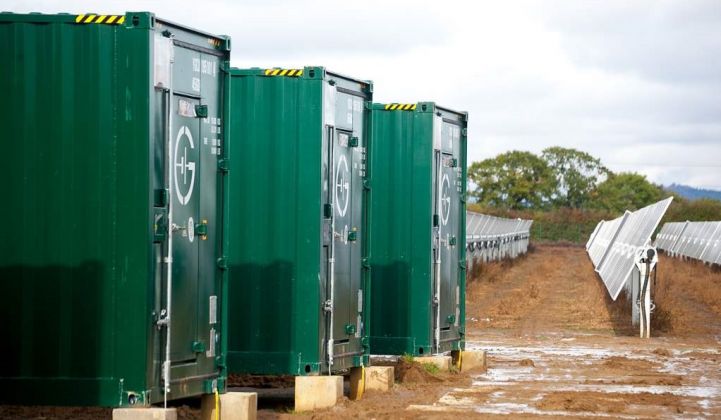Europe's power system will look very different in 2030, with energy storage supporting the “dominance” of wind and solar generation, according to new research from Wood Mackenzie.
The big five European markets — Germany, the U.K., France, Italy and Spain — will get the majority of their power from wind, solar and other variable renewable energy sources as early as 2023, WoodMac says. By 2040, Europe is expected to add another 169 gigawatts of wind and 172 gigawatts of solar.
As that variable output surges, Europe has four options for balancing out its grid: pumped hydro, gas peakers, energy storage and interconnectors. Only the final three of the quartet are likely to be the focus of new investment.
For now, “gas peakers are more essential than ever,” said Rory McCarthy, Wood Mackenzie principal analyst. “They can ramp up to full output from warm in a couple of minutes for modern systems, have increasing efficiency levels at part loading and boast unlimited duration, assuming a reliable gas supply.”
But by the end of the decade, battery storage will be the cheapest option for balancing Europe's grid, overtaking gas peakers, according to a new long-term energy storage outlook. Europe's energy storage capacity across all segments is expected to grow from 3 gigawatts today (excluding pumped hydro) to 26 gigawatts in 2030 — and 89 gigawatts by 2040.
By 2040, Europe could have 320 gigawatt-hours of storage capacity available for second-to-second system balancing, WoodMac says. Most of that will come from front-of-the-meter battery systems.
“By 2030 energy storage will beat gas peakers on cost across all our target markets, resulting in a cloudy outlook for any new future peaking turbines," McCarthy said. "Fuel and carbon prices are on the up, technology costs are not set for any major decreases and net-zero policies will eventually target the decarbonization of all power market services.”
Gas plants next on chopping block after coal
Coal and nuclear power will be the biggest losers in Europe's energy system by 2040. After the demise of coal, gas without carbon capture will be the "next target," McCarthy said.
Europe will lose 41 gigawatts of nuclear power capacity by 2040 as new projects fail to keep place with closures, WoodMac says. New-build projects in the U.K. are struggling to raise financing, leaving the government to assess whether it’s economical to fund construction directly from consumer bills.
Germany will be the last major market to push coal off its grid. Its coal phaseout deadline is 2038.
***
Learn more about WoodMac's new research here.




